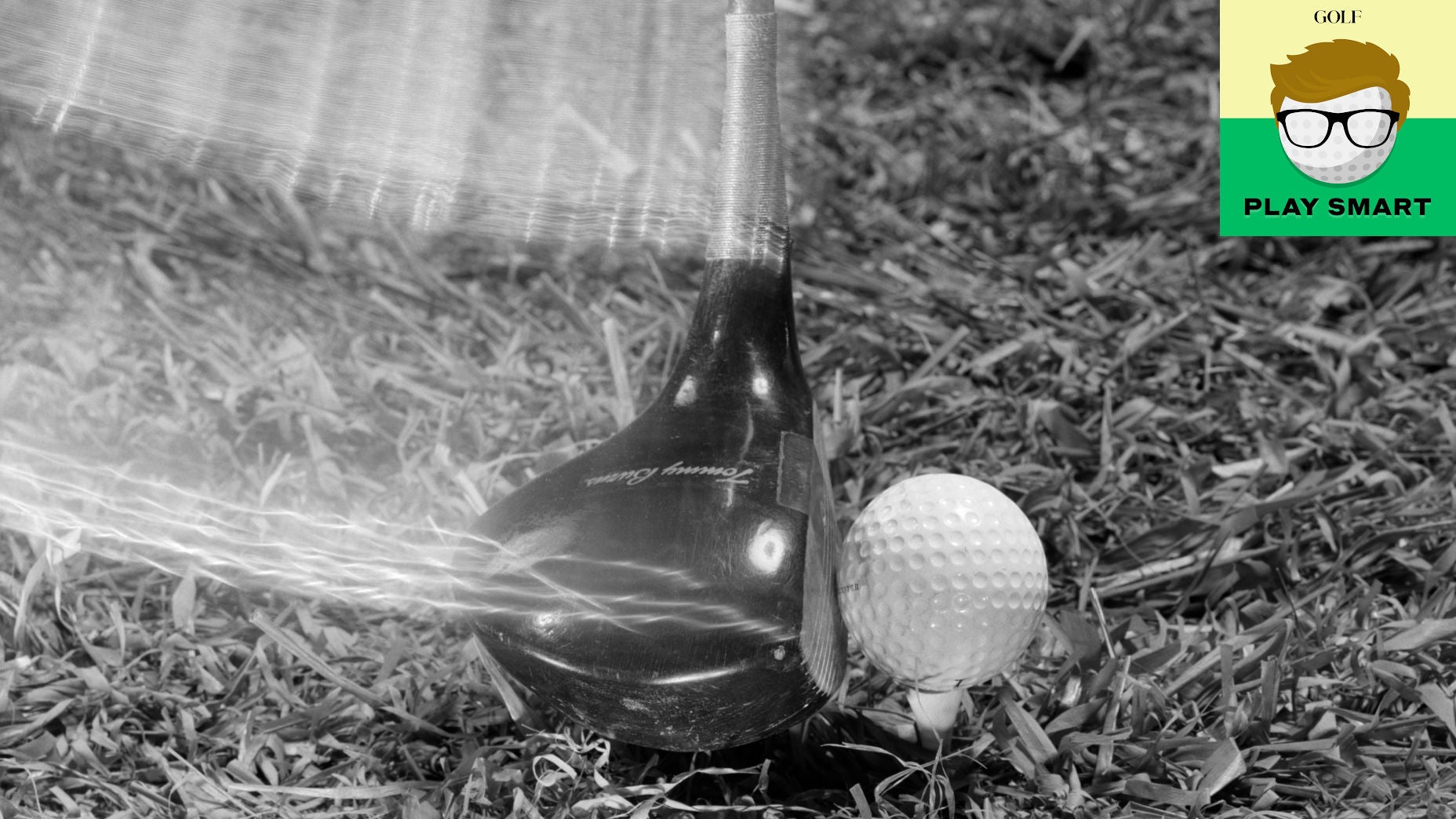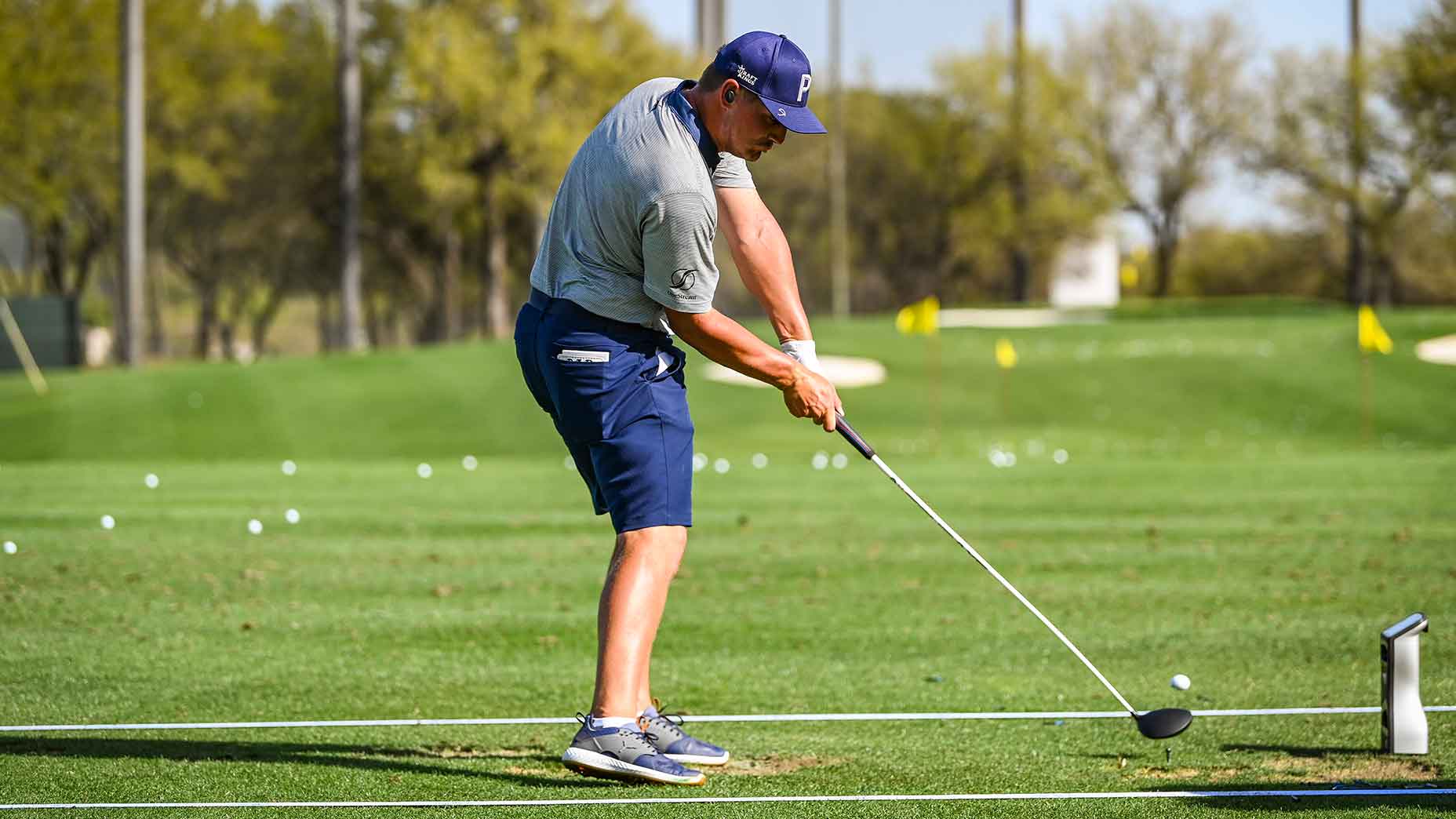
Welcome to Play Smart, a game-improvement column that drops every Monday, Wednesday and Friday from Game Improvement Editor Luke Kerr-Dineen to help raise your golf IQ and play smarter, better golf.
We talk a lot about clubhead speed around these parts, and occasionally people will tweet at me asking if trying to get more speed in their golf swing will result in less accuracy, or consistency, or worse technique.
The idea makes a certain amount of sense, and indeed, there’s an element of truth to it. But the idea that more speed means less accuracy isn’t really true, as biomechanist Dr. Sasho Mackenzie explained recently in his presentation at the GOLF Top 100 Teachers Summit.
You can watch the full video above, but Sasho, talking about the Stack Speed System he co-invented, explains that if you do it right, training for more speed won’t just help you hit the ball further, but can help you hit it straighter, too.
“If you have the mindset that it’s going to hurt your swing, then maybe it will,” Mackenzie says. “But it doesn’t have to.”
Here’s how.
1. Think of it as different sport
It’s somewhat counterintuitive, because swinging a speed-boosting training aid requires you to make a golf swing, but it’s not the same thing as golf. Your goal of speed training is to “swing the stick fast,” Sasho says. It’s a form of exercise designed to help you both gain strength, and train your muscles to release that strength, similar to lifting a dumbbell.
“It’s a different exercise, designed to train your neuromuscular system,” he says.
Sure, it’s a similar motion, but having the ability to do one thing (swing fast) doesn’t rob you of the ability to do the other (hit the ball straight), the same way hitting chip shots doesn’t mean you’ll get worse at hitting bunker shots.
“Does practicing a tight-lie, into the grain pitch shot with your sand wedge negatively impact your bunker play?” Sasho asks. “No. It’s the same club, but those mechanics, don’t have to negatively impact one other.”

2. Never bring max effort to the course
What training for more speed does do, Sasho says, is get you stronger and act more efficiently. That’s a good thing, but also one of the areas where golfers tend to get into trouble.
The more speed training you’ll do, the stronger you’ll get, which means you’ll be able to swing the golf club just as fast or faster with less effort. Often, when golfers speed train, then start hitting their driver more wayward, it’s because simply, they’re swinging too hard, without realizing it.
“Where I see people get caught in the trap is when they look at it like: ‘Bryson’s at 190 ball speed. I can swing at 190 ball speed.’ But Bryson is swinging at 80 percent of his [max speed] to get to 190 ball speed,” Sasho says. “If you’re working at 97 percent of your max speed to get to 190, you’re not going to find a fairway.”
The goal of a good speed training program, Sasho says, is to raise “raise your maximum speed potential.” When you do that, it’s a luxury: The higher your speed potential, the easier you can swing, which means you’ll hit it straighter and further, with less effort.
You can watch the full video below, or view Sasho’s full presentation right here.








